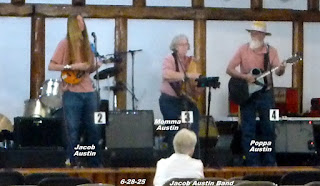The Building That Moved: See How

In the realm of engineering marvels, few stories captivate
as much as the relocation of the Indiana Bell Building in 1930. At
the heart of this feat lies a simple question: How do you move a 22-million-pound, eight-story
building without disrupting its operations? The answer lies in a
combination of clever planning, precise execution, and a level of ingenuity
that still inspires engineers nearly a century later.
The Challenge

In the late 1920s, the Indiana Bell Telephone Company found
itself in a tricky position. To expand its headquarters, it needed to replace
its existing building. However, tearing it down would interrupt crucial
operations and affect the company’s 600 employees and its
thousands of customers. Instead of demolishing it, engineers proposed an
unprecedented solution: moving the building intact while employees continued
working inside.
This bold idea was met with skepticism, but the engineers
were determined. They devised a meticulous plan to lift and move the entire
building using hydraulic jacks and steel rollers, allowing them to slide the
structure to its new location without causing any damage. The project not only
demonstrated remarkable engineering ingenuity but also highlighted the
company’s commitment to maintaining operations and service continuity during a
major transformation.
Engineering Genius in Action

Unleash Your Inner Architect
Whether you're a professional architect or simply passionate
about design, our newsletter is for you. Sign up now to fuel your passion for
all things architecture.
Top of Form
Build a Better World with Us
Bottom of Form
We use your personal data for interest-based advertising, as
outlined in our Privacy
Notice.
The relocation of the building, which weighed a
staggering 22 million pounds, began in October 1930. Engineers
devised a method to place the structure on a network of steel rails and wooden
beams. Hydraulic jacks were then used to slowly push the building along these
rails at a steady rate of 15 inches per hour.
Despite the slow pace, the building was able to move 52
feet to the south and rotate a full 90 degrees, all in
just 34 days. To ensure minimal disruption, utility lines—such as
gas, electricity, water, and telephone services—were cleverly rerouted so
employees inside could work uninterrupted. Imagine typing on a typewriter or
making a phone call while the entire building beneath you is shifting—it’s
almost unbelievable!
Employee Experience

Perhaps the most astonishing part of this story is that
the 600 employees working in the building didn’t feel the
movement at all. There were no sudden jolts or vibrations. By keeping the speed
slow and steady, the engineers ensured the process was seamless. It’s even said
that meetings were held, calls were made, and work proceeded as usual, with
employees largely unaware of the ongoing relocation.
This level of precision and careful planning highlights the
incredible engineering behind the project. The entire process was meticulously
coordinated, with every detail accounted for to ensure that the building’s
operation continued smoothly without disruption. It’s a testament to the
expertise and dedication of the team, proving that even monumental tasks can be
completed with minimal impact on day-to-day activities.
Technological and Historical Impact

This incredible engineering achievement stands as a
milestone in construction history. The ability to move a structure this massive
with such precision is a testament to human ingenuity. At the time, it was
groundbreaking, and even today, the story of the Indiana Bell Building is
studied in engineering and architectural circles as a case study in
problem-solving and resource management.
The project’s success set a precedent for future building
relocations, proving that the impossible can become possible with enough
planning and innovation. It demonstrated the power of creative problem-solving,
inspiring engineers and architects to think outside the box when faced with
seemingly insurmountable challenges. This remarkable feat not only preserved
the company’s operations but also left a lasting legacy in the world of
engineering and construction.
Why Did This Matter?

Beyond the immediate goal of expanding the Indiana Bell
headquarters, this project demonstrated the potential of engineering to solve
seemingly insurmountable challenges. It also underscored the value of ingenuity
in minimizing business disruption. By moving the building instead of
demolishing it, the company avoided a significant loss of time and resources,
making it a win-win situation for both employees and management.
This groundbreaking approach also paved the way for future
innovative solutions in construction and urban development. It highlighted the
importance of thinking creatively to address complex problems, showing that
with the right vision and expertise, even the most unconventional ideas can
lead to successful outcomes. The project remains a prime example of how
engineering can drive efficiency and sustainability in modern business
practices.
What Can We Learn from This?
The Indiana Bell Building relocation teaches us several
important lessons:
- Innovation
is Key: The project exemplified the power of creative problem-solving.
- Precision
Matters: The use of hydraulic jacks and rail systems required
incredible attention to detail to avoid structural damage.
- Human
Comfort Can Be Prioritized: The fact that employees continued working
without feeling the movement shows that engineering can harmonize with
human needs.
- Long-term
Thinking Pays Off: Rather than tearing down and rebuilding, the
company chose a sustainable solution, which saved resources and time.
The Legacy of the Indiana Bell Move

To this day, the Indiana Bell relocation is considered one
of the greatest engineering achievements of the 20th century. It’s a story of
daring, innovation, and human determination. While we often marvel at modern
feats like skyscrapers and space travel, it’s important to remember the
historical milestones that paved the way for such advancements.
The Indiana Bell Building project reminds us that with
enough ingenuity and effort, even the largest challenges can be overcome.
Nearly a century later, this project still inspires architects, engineers, and
problem-solvers around the world.

.jpg)






.jpg)






